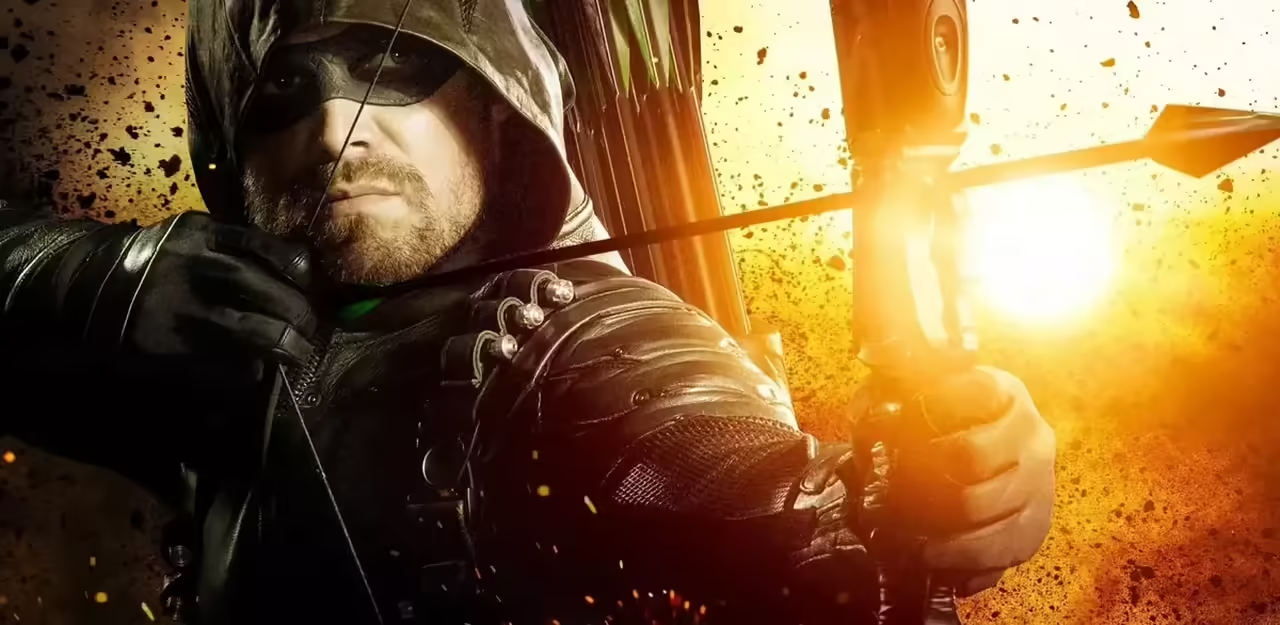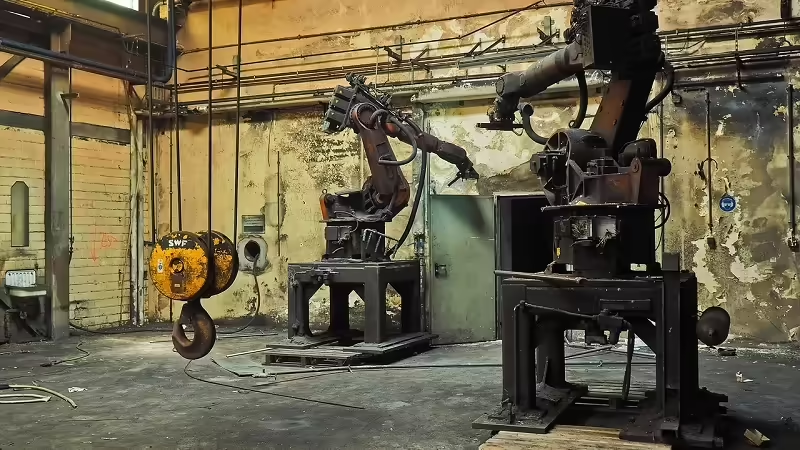
In recent years, we have witnessed the rise of comic book adaptations to the screen, and one of the series that marked a milestone in this phenomenon was “Arrow.” This hit superhero series, based on DC Comics’ Green Arrow character, not only captivated comic book fans, but also attracted a wide audience worldwide through its distribution on Netflix.
“Arrow” first premiered in 2012 on The CW television channel and was created by Greg Berlanti, Marc Guggenheim and Andrew Kreisberg. The series follows the life of Oliver Queen, played by Stephen Amell, a billionaire playboy who, after being stranded on an island for five years, returns to Starling City as a hooded vigilante with bow and arrow skills.
What made “Arrow” stand out was its realistic and dark approach to the superhero genre. Unlike other comic book adaptations, the series explored more mature and complex themes, such as redemption, legacy and corruption. It also featured a more strategic approach to combat and the physical abilities of its protagonist, rather than simply relying on superpowers.
Since its launch, “Arrow” quickly became a television phenomenon and laid the groundwork for what is known as the “Arrowverse.” This television franchise includes other series based on DC Comics characters, such as “The Flash,” “Supergirl” and “Legends of Tomorrow,” all of which are connected and intertwine in exciting crossover events.
In 2019, when “Arrow” came to an end after eight seasons, Netflix acquired the streaming rights to the series, allowing a new audience to discover and enjoy the full story of Oliver Queen. The arrival of “Arrow” on Netflix was enthusiastically received by fans, who were able to relive the exciting adventures of the emerald archer and enjoy each season at their own pace.
The inclusion of “Arrow” in Netflix’s catalog also contributed to its growing popularity and expanding audience that enjoys comic book adaptations. The streaming platform has been a key arena for this type of content, giving fans the opportunity to immerse themselves in the world of superheroes and discover new stories.
In addition, Netflix has further fostered interest in the “Arrow” characters by featuring other related series on its platform. These include “The Flash,” which follows the adventures of Barry Allen, a close ally of Oliver Queen on “Arrow,” and “Legends of Tomorrow,” which features supporting characters from “Arrow” and “The Flash” teaming up in a time-traveling team-up.
The “Arrow” storyline on Netflix is a clear example of the power of comic book adaptations on screen and how streaming has made it easier to access this type of content for an ongoing and diverse audience. Netflix has proven to be a welcoming home for superhero series, and the inclusion of “Arrow” on its platform has provided fans with a convenient way to enjoy all seasons in one place.
In addition to its distribution on Netflix, “Arrow” has left a lasting impact on the world of comic book adaptations. The series pioneered a shared universe approach to television, setting a model for other productions that followed in its footsteps. The interconnectedness between the series in the “Arrowverse” allowed fans to follow the stories and characters across different shows, creating a sense of cohesion and shared excitement.
“Arrow” also had a significant impact on the portrayal of superheroes on screen. Stephen Amell delivered a compelling and charismatic performance as Oliver Queen, and his interpretation of the character helped elevate Green Arrow’s reputation in popular culture. The series addressed relevant social and political issues, and featured a diversity of characters that reflected the reality of society.
Another highlight of “Arrow” was its focus on character development. Throughout the seasons, viewers witnessed Oliver Queen’s transformation from a lonely, broken man to a courageous and committed leader. Secondary character arcs also received significant attention and development, allowing the audience to connect with a variety of complex and fascinating individuals.
As “Arrow” continues to attract new fans across Netflix, its legacy lives on. The series paved the way for many other successful comic book adaptations and has left an indelible mark on pop culture. The story of Oliver Queen and his fight for justice will continue to be remembered as one of the most notable contributions to the superhero genre on the small screen.
Technology in the Arrow series
The “Arrow” series not only stood out for its story and characters, but also incorporated technology integrally into its plot. Throughout the seasons, it featured a variety of futuristic devices and technologies that played an important role in fighting crime and policing Starling City.
One of the most prominent technological elements in the series was the Archer’s Cave, Oliver Queen’s secret hideout where he developed his skills and planned his missions. The cave was equipped with advanced technology, including touch screens, high-tech communication systems and a plethora of monitors displaying real-time information. This base became the nerve center of Green Arrow’s operations and was key to his fight against crime.
Another highlight was Green Arrow’s suit, which was designed specifically to assist him in his vigilante activities. The suit featured built-in technology such as integrated communicators, GPS trackers and ballistic protection. In addition, Oliver Queen used special arrows that featured advanced technology, such as explosive arrows, electric discharge arrows and tracking arrows.
Felicity Smoak’s character also played an important role in the implementation of technology in the series. She was a computer whiz and provided technical support to Oliver Queen and his team. Felicity used her ability to hack into security systems and obtain valuable information for missions. In addition, her ability to hack and manipulate technology was crucial on several occasions to disable explosive devices and stop threats.
As the series progressed, more technological advances and futuristic devices were introduced. For example, surveillance drones were introduced, which Green Arrow used to monitor the city and obtain real-time information. It also featured cybernetic implants and prosthetics, such as Deathstroke’s bionic arm, which enhanced the physical abilities of certain characters.
The series also explored issues related to ethics and the implications of technology on society. Concerns about privacy and surveillance were addressed, as well as the power and control that technology can exert over people. These themes added an additional layer of depth to the plot and encouraged reflection on the responsible use of technology.
The Arrow Multiverse: Exploring the different alternate universes
In the “Arrow” universe, the notion of a multiverse was introduced and explored throughout the different series of the “Arrowverse.” The multiverse is a concept that describes the existence of multiple parallel universes, each with its own reality and alternate versions of characters and events.
The first hint of the multiverse in “Arrow” was made known with the introduction of the character of Barry Allen, also known as “The Flash.” In the eponymous series, Barry discovers the existence of Earth-2, an alternate universe inhabited by different versions of the known characters. This was the starting point for the exploration of the different alternate universes within the “Arrowverse”.
One of the most prominent multiverse-related moments in “Arrow” occurred during the “Crisis on Infinite Earths” crossover, which united all the series of the “Arrowverse.” This massive event featured a showdown against the Anti-Monitor and brought about the destruction of multiple universes. Heroes from different realities united to stop the threat and protect the existence of the remaining multiverses.
During “Crisis on Infinite Earths,” numerous alternate universes were explored, each with its own version of iconic DC Comics characters. Viewers witnessed exciting encounters between different versions of favorite heroes and villains, leading to shocking moments and connections between the different series of the “Arrowverse.”
The “Crisis on Infinite Earths” event also allowed for elements from other DC Comics adaptations to be incorporated, such as the “Smallville” television series and the “Batman” and “Superman” films from different decades. This further expanded the scope of the multiverse and generated excitement among fans to see interactions between different incarnations of the characters.
After “Crisis on Infinite Earths,” the multiverse became a recurring element in the “Arrowverse.” New universes were introduced, such as the “Earth-Prime”, where the different remaining realities were merged. This allowed characters from different series to interact more freely and opened the door for more crossovers and exploration of alternate universes in the future.
The introduction of the multiverse in “Arrow” and the “Arrowverse” in general has given fans the opportunity to see different versions and approaches to their favorite characters. It has also allowed the series creators to explore broader and more epic storylines by including elements from other alternate universes.
The Rise of the Villains: Iconic Antagonists on Arrow
Throughout its eight seasons, “Arrow” featured a variety of iconic antagonists who challenged Oliver Queen and tested his resolve as the Green Arrow. These villains were central to the plot and contributed to the development of the main character and the other cast members.
One of the most memorable villains in the series was Malcolm Merlyn, played by John Barrowman. Merlyn, also known as “The Dark Archer,” was the main antagonist of the first season. As the leader of the League of Assassins, he sought to destroy the Glades, a Starling City slum, as part of his plan to purify the city. The complex relationship between Merlyn and Oliver Queen added tension and excitement to the series’ narrative.
Another villain of note was Slade Wilson, played by Manu Bennett. Slade, also known as Deathstroke, was introduced as a friend and mentor to Oliver Queen in flashbacks during the early seasons. However, due to a series of tragic events, Slade became a powerful enemy obsessed with revenge. His menacing presence and personal connection to Oliver created moments of high intensity and led to one of the series’ most impactful arcs.
Aside from Merlyn and Slade, “Arrow” also introduced other unforgettable villains. Damien Darhk, played by Neal McDonough, was a powerful sorcerer and leader of the organization H.I.V.E. His quest for power and control over Star City made him a formidable foe for Oliver and his team. McDonough’s charismatic performance made Darhk stand out as a ruthless and charismatic villain.
“Arrow” introduced characters such as Ra’s al Ghul, played by Matt Nable, leader of the League of Assassins; Prometheus, whose identity is revealed later in the series, played by Josh Segarra; and Cayden James, played by Michael Emerson, a master hacker with an agenda of his own. Each of these villains brought their own style and motivations, creating unique challenges for Green Arrow and his team.
The strength of “Arrow” lay in its ability to develop these villains in a meaningful way. The series explored the origins and motivations of each antagonist, providing a backstory and depth that made them more than just adversaries. This allowed viewers to understand and become emotionally invested in the villains, creating moral conflicts and dilemmas for the main characters.
The rise of villains in “Arrow” was not only limited to individual antagonists, but also encompassed organizations and criminal groups. The League of Assassins, H.I.V.E. and the Dome Team were some of the most formidable threats Oliver Queen and his team had to face throughout the series. These groups presented large-scale challenges and led to epic, action-packed confrontations.







